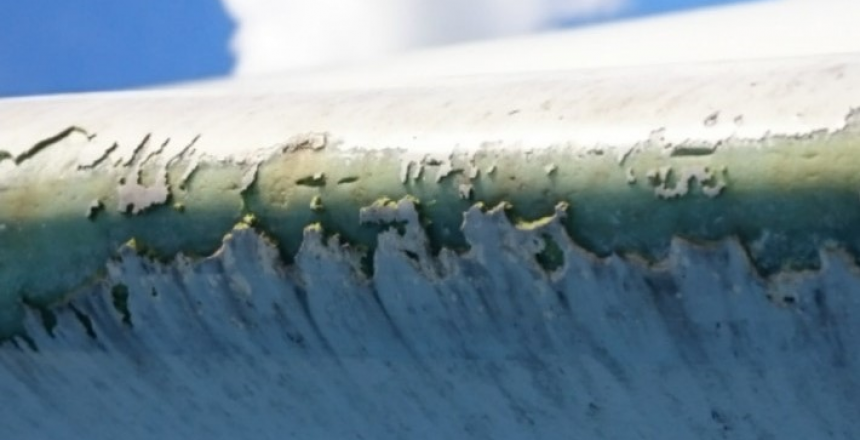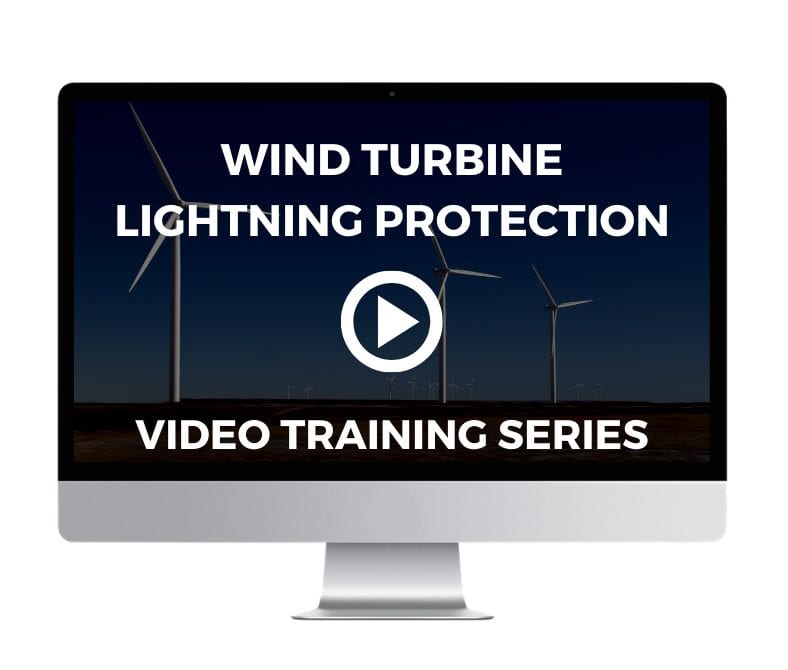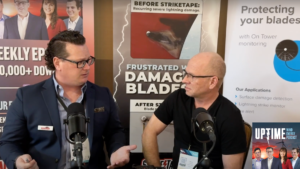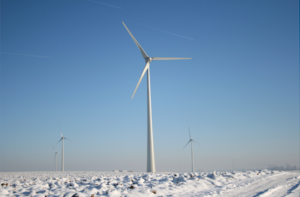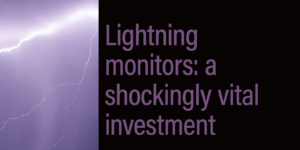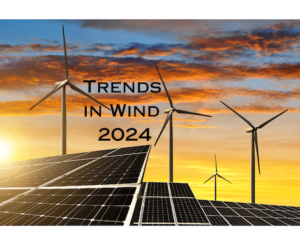Leading edge erosion on wind turbine blades is a major cause of reduced power output and efficiency as wind farms age. But, this growing problem is not well understood, so in today’s article we’ll tackle some of the root causes of leading edge erosion, what’s being done about it, and what we should look to in the future to solve this industry-wide problem.
What Is Leading Edge Erosion and How Does it Occur?
To get started, let’s start with a short FAQ:
Leading Edge Erosion FAQ
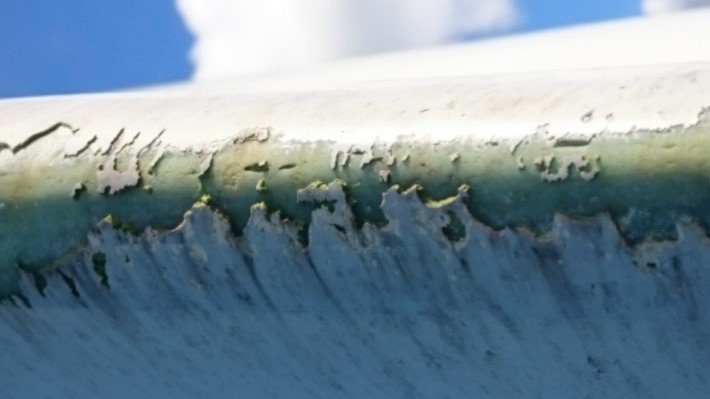
Put simply, as a wind turbine blade slices through the wind at high speeds, the fine particulate in the air–dirt, dust, ice, snow, rain–smashes into the blade surface.
Over time, these tiny collisions wear away the outer layer of the turbine blade surface, slowly eating deeper and deeper into it. As the blade surface is eaten off, the aerodynamics of the blade are negatively impacted, causing the wind turbine to produce less energy over time. This excellent article on leading edge erosion research shines more light onto how this occurs.
Why Is Leading Edge Erosion Such a Major Problem?
It’s all about maintaining factory aerodynamics as long into the blade’s life as possible.
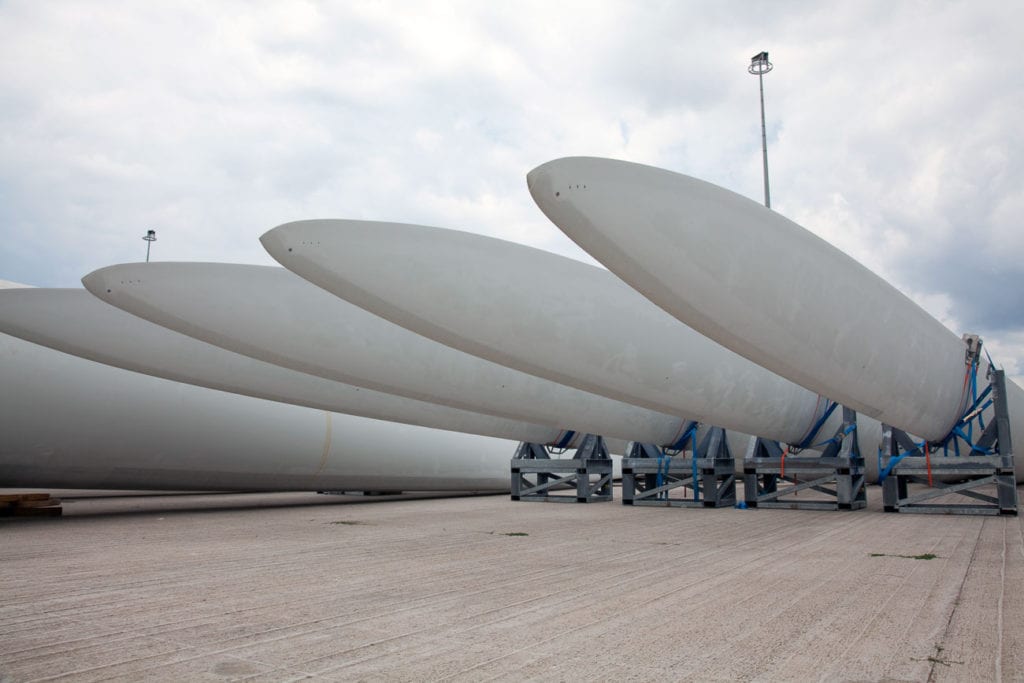
Factory aerodynamics produce the best possible power yield. When the coating of the blade erodes away, the aerodynamics and power production both suffer. The smooth, aerodynamic leading edge surface of a wind turbine blade is meticulously designed to produce maximum power given the length and overall size of turbine.
As a new blade rolls off the factory floor and is shipped to the site, it has the highest efficiency of its lifespan and will begin to slowly lose efficiency over time due to wear and tear. It’s not just leading edge erosion that reduces efficiency, but also dielectric changes that lead to greater lightning damage and other aspects of wear and tear.
Although leading edge erosion is perhaps the largest source of wear and tear, this wasn’t well understood in the early days of wind power engineering.
What’s more, wind turbine blade manufacturers are still lagging behind. Most production blades still lack adequate protection, even as we’ve learned more and more over the past decade about the destruction caused by long blades, high tip speeds and the elements. Retrofitting older blades with leading edge protection (LEP) is a good band-aid that can extend life significantly, but this still ignores the root cause in the first place: blade designs that aren’t holding up in the harsh wind farm environment.
The Destructive Power of Rain on Wind Turbine Blades
The most consistently damaging natural force is rain, which is much more abrasive than the fine particles floating in the air. Ice is extremely destructive but less common than rain because of seasonal temperatures. Though many wind turbines are placed in warm climates that will never experience ice or now, nearly all wind farm sites will experience rainfall each year.
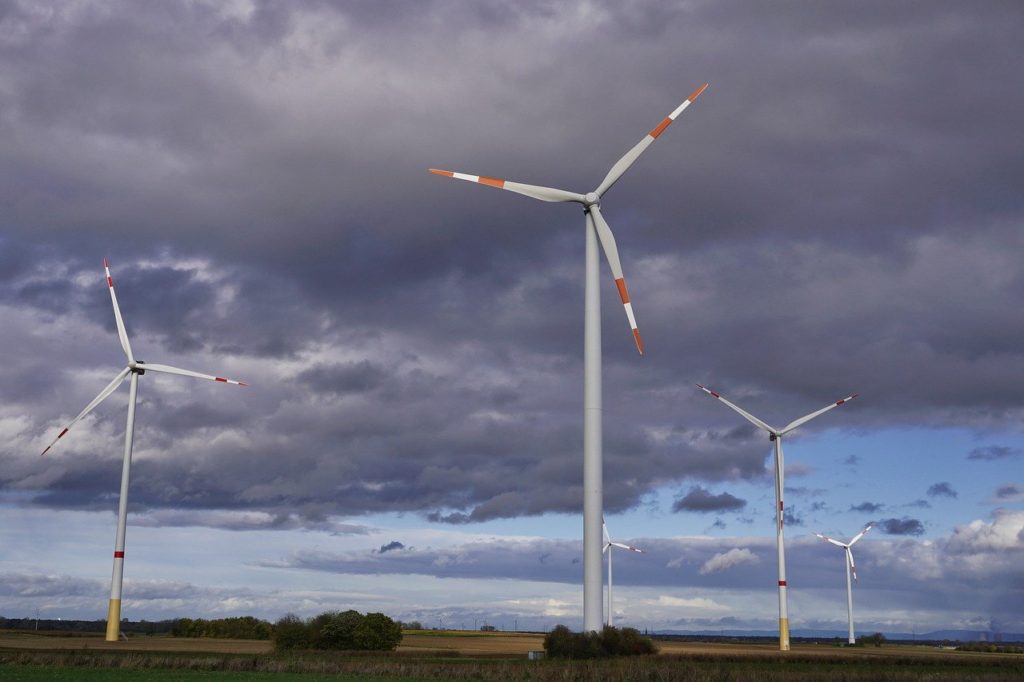
Though a droplet of rain or a beautiful snowflake may not seem like much of a threat, we have to remember that wind turbine blades are spinning at tip speeds of 120-180 miles per hour (190-290 kph). This means the collision between blade and rain droplet is as abrasive as a commercial power-washer.
This fun video below reminds us just how destructive water can be when moving at high speeds.
Rain + Wind Turbine Blade = Powerwasher…for 20 years
Many commercial powerwashers are easily capable of creating a 300mph water jet. At a distance of a few feet (where the speed slows down considerably) is where we’d get speeds in the mid-100s, which are what wind turbines are put through in every storm. Think about that for a moment…a powerwasher-like spray for two decades in service. That’s a LOT of abuse.
Remember: wind turbine blades are spinning at tip speeds of 120-180 miles per hour (190-290 kph), creating high-speed collisions with even tiny particles in the air.
Here at Weather Guard, we subject our StrikeTape lightning diverters to a 300mph water jet test to ensure they’ll withstand rain erosion that greatly exceeds what it would ever see in real life. The question is, are manufacturers doing the same as blades leave the factory?
Leading Edge Protection: What Solutions Are On the Market Today?
There are a number of solutions for leading edge protection on the market today, and significant research has been conducted on the subject. Tape, paste, epoxy, metal tiles and more are all vying for a place in the very valuable and growing operations and maintenance market. There is big money to be made fixing the leading edges of thousands upon thousands of wind turbines that are currently having leading edge problems. Let’s explore a few of the common solutions…
Nickel-Cobalt Tiles: Protecting Aircraft Everywhere…and Now Wind Farms?
Nickel-cobalt tiles are thought to have potential for leading edges. But, this technology is new and more in the prototype stage. Listen in to a clip from Uptime, our wind energy podcast, as we discuss the pros and cons of this very durable but controversial material.
Nickel-cobalt is an extremely hard, durable alloy that has been used extensively in the aircraft industry to protect the leading edges of airplane propellers and helicopter rotors. In the old days of wooden propellers, leading edge protection was absolutely critical, as wooden propeller blades would erode quickly (and dangerously) at the tremendous rotational speeds produced by prop engines.
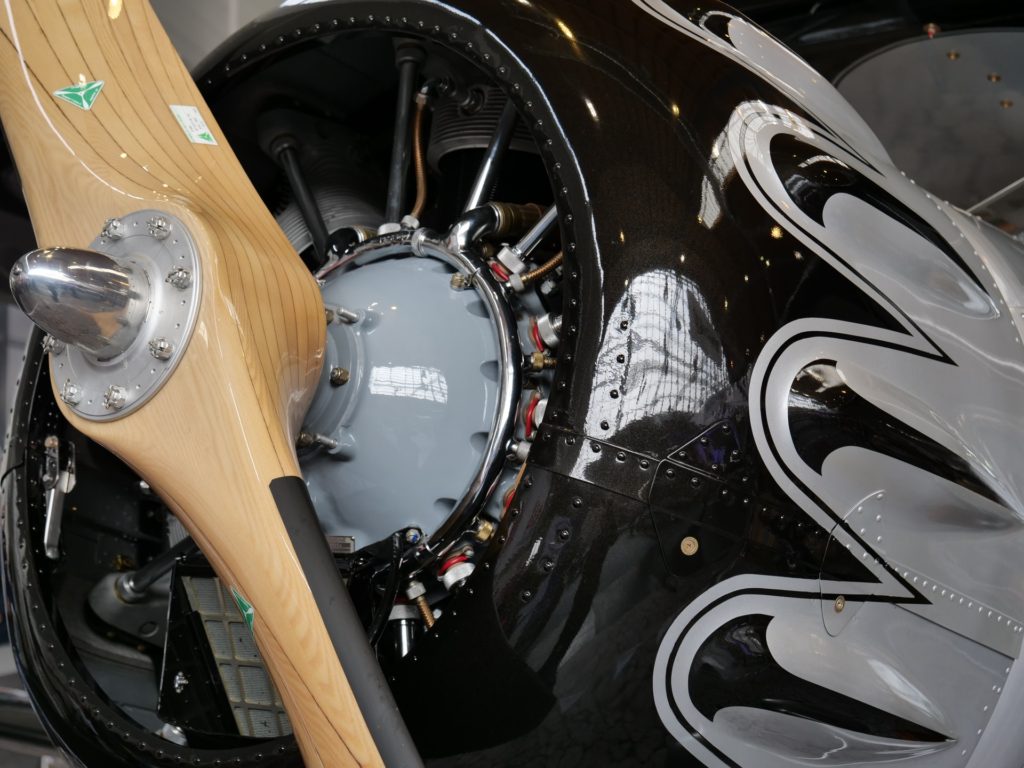
GAR Electroforming manufactures leading edge protection for helicopters featuring nickel-cobalt, as aircraft have to be extremely reliable and safe to maintain airworthiness. Hartzell, a leading manufacturer of propellers, also protects their composite and aluminum props with nickel-cobalt strips as part of the design. Technology from helicopter blades has already found its way in the wind sector.
This excellent article from Wind Power Engineering shares insight into nickel cobalt prototypes that may gain traction in the future if the technology can be improved for wind turbine applications. Yet, cobalt is a conflict mineral and can cause a change to the electrical properties of a wind turbine blade, requiring further study of the lightning protection system (LPS) and potentially a significant LPS upgrade. In short, a wind farm operator may be robbing Peter to pay Paul, so to speak, in fixing leading edges with metal tiles – the increase in lightning strikes may cause even more trouble than that caused by leading edge erosion.
Leading Edge Epoxies & Coatings
Coatings are perhaps the easiest way to future-proof a wind turbine leading edge that has been rebuilt. This article on leading edge protection coatings explains that a handful of coatings have proven very durable over time, some as long as 10 years following an edge repair.
The big questions is, why aren’t blades leaving the factory with such coatings in the first place?
To be fair, many probably are, but wind turbine blade manufacturers keep trade secrets closely held and confidential. We may not know exactly what is applied to modern blades that leave the factory, but we do know that in the past, factory blades just have not held up–a large percentage need retrofit solutions to be restored to as close to factory performance as possible. Belzona is one such company that offers gel coatings that can extend edge life and improve lagging performance.
Watch the video below to see an example of a repair and coating process.
Other companies like 3M and BladeRep also offer leading edge solutions, and the market continues to grow as more reputable corporations throw their hat into the ring to solve this problem.
Leading Edge Tapes
This 2015 study by Ohio State University found that in small-scale model testing that leading edge tape would likely not have a detrimental effect on performance. Though they did find increased drag at certain angles of attack, lift actually increased in some places and the overall effect was thought to be positive.
Numerous companies offer leading edge protection (LEP) for wind turbines, including ArmourEdge and Poly Tech, to name a few. Poly Tech’s ELLE is available as both a factory-applied and retrofit solution.
Wind Farms are Being Erected in Regions with Much Greater Rainfall
Though it’s clear that new blades need to roll off the factory floor with additional protection than what has been offered in the past, blade manufacturers like LM Windpower, GE, Siemens Gamesa Renewable Energy claim to be working hard on the problem. This article by LM Windpower on leading edge protection development explains how a shift to more wind farms in wet regions of the world (including offshore) has resulted in turbines facing 3-4 times more rainfall. Blades have to be improved to withstand these new, harsher conditions. This is one reason why retrofit solutions like the one shown below are necessary – to simply help correct for problems not previously foreseen.
Hopefully the surge in research into leading edge protection will result in more factory-applied protection. But even still, we know that many blades leave the factory with too little durability on the leading edge.
Why is a Wind Turbine Blade LEP Not Factory-Applied More Often?
The answer isn’t clear, though the problem is now well-known and significant in scope. Thousands upon thousands of blades currently in service are suffering from leading edge erosion and a loss of energy efficiency. This costs the wind industry millions–if not billions–of dollars annually by conservative estimates.
For renewable energy to have a lasting impact on our planet, wind energy companies need to deliver on the promises made to the public–that green energy can meet production goals and can continue to become more affordable compared to fossil fuels. If so many turbines are leaking and losing efficiency, then this threatens the industry’s ability to deliver on these promises.
SOLUTIONS: What Does The Future Hold For Leading Edge Erosion?
The wind energy industry boasts some of the top engineering minds in the world. This problem of leading edge erosion is solvable, but it’s not just engineering that will get us there. Rather, there are significant business hurdles that require a culture shift within a traditionally secretive industry.
From our perspective, we believe the following needs to happen for the wind energy as a whole to solve the leading edge erosion problem:
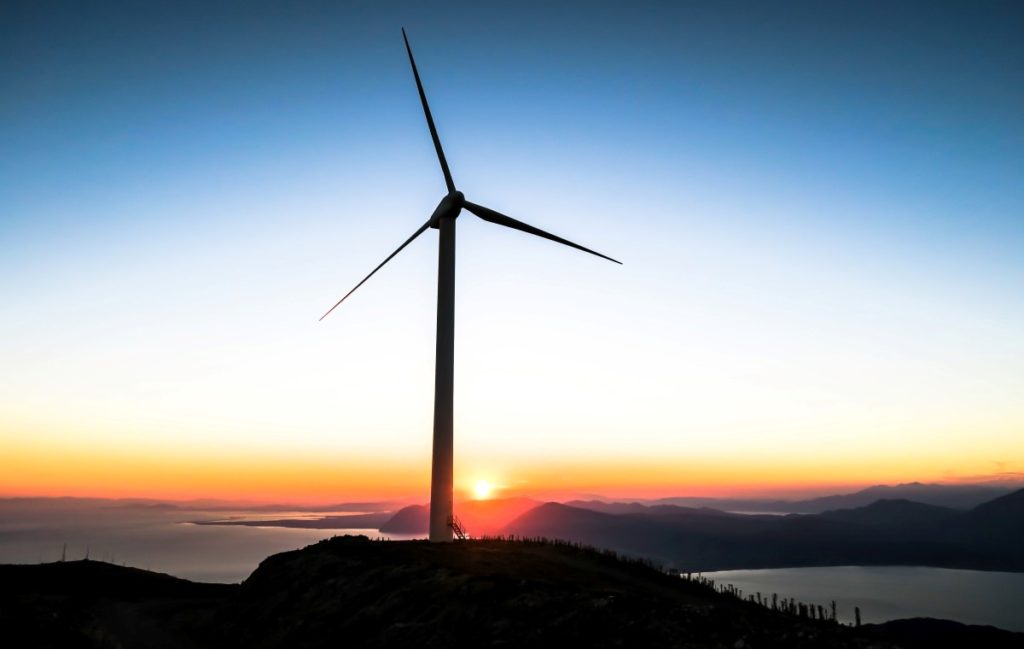
1. Wind Farm Operators Need to Invest in More Regular Drone Inspections
More and more data is being gathered thanks to more frequent and higher-quality aerial inspections. Companies like SkySpecs are leading the way in drone inspections of turbine blades, but the industry as a whole needs to get on board faster.
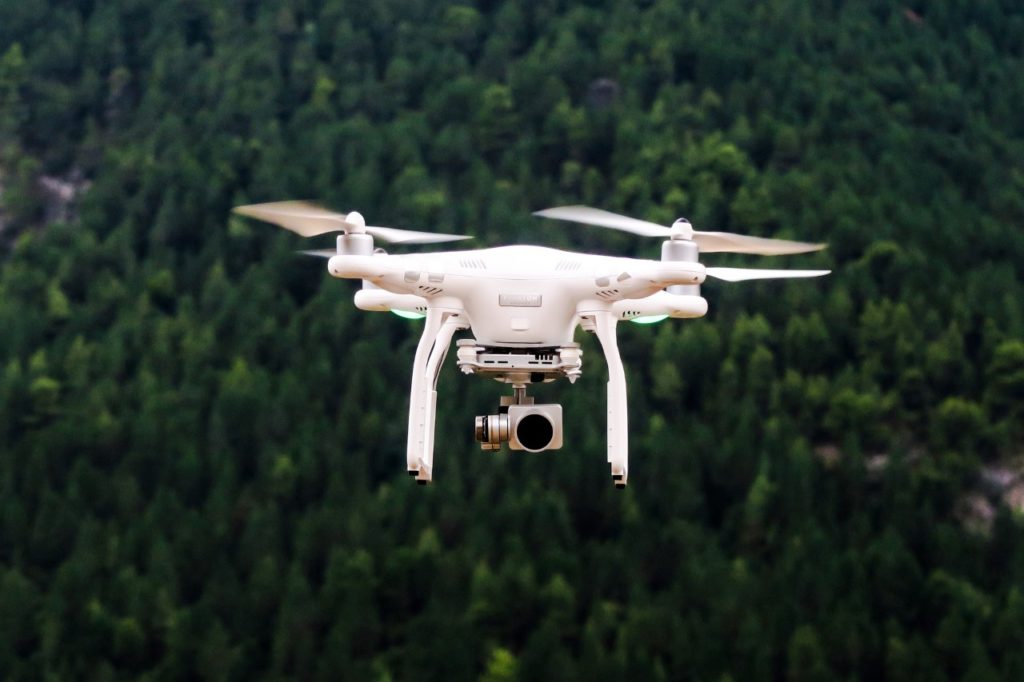
The more data we wind farm operators and OEMs gather and share (more on this in the next paragraph), the more the problem can be addressed and solutions can be tested. We, as an industry, need to know how widespread problems like leading edge erosion are, and we also need follow-up inspections in regular intervals after retrofit solutions have been installed to track their effectiveness and wear-resistance.
2. OEMs Need to Share Data That Isn’t Strictly Sensitive
Rather than working together to solve what’s clearly an industry-wide problem, everyone appears to be scrambling to figure it out on their own.
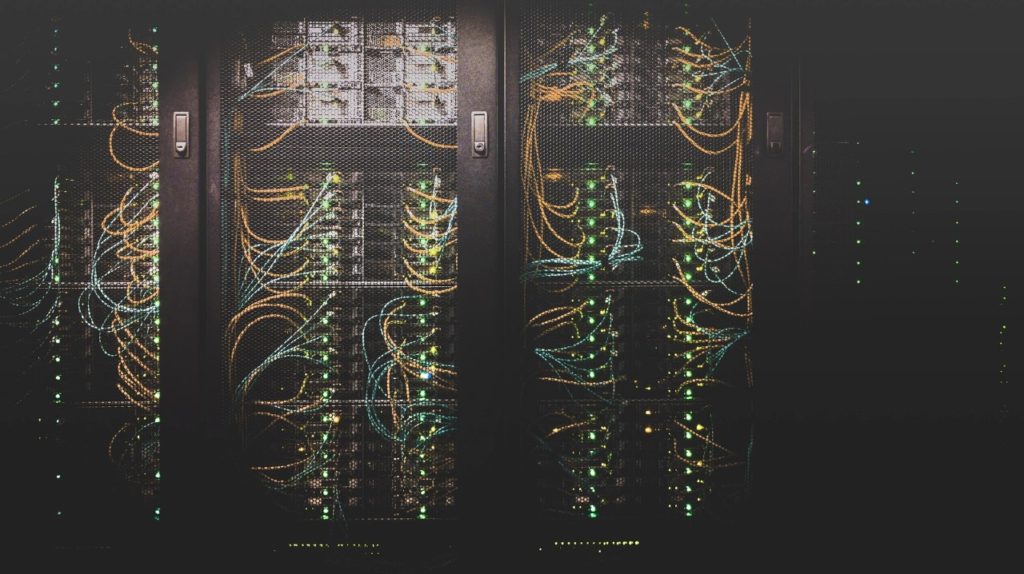
If the industry wants to see renewable grow to its potential, collaboration between the big CEOs should be a priority. Not all data needs to remain confidential. Trade secrets don’t often pass between corporations, yet that may be exactly what is needed to rid wind power of some of these efficiency problems.
3. More Wind Farm Operators Need to Install Retrofit Leading Edge Protection – For the Data
We aren’t going to know if the many retrofit options are viable longterm solutions until they’re installed in higher numbers. We need wind farm operators to be early adopters so retrofit solution providers can improve their products according to field condition reports.
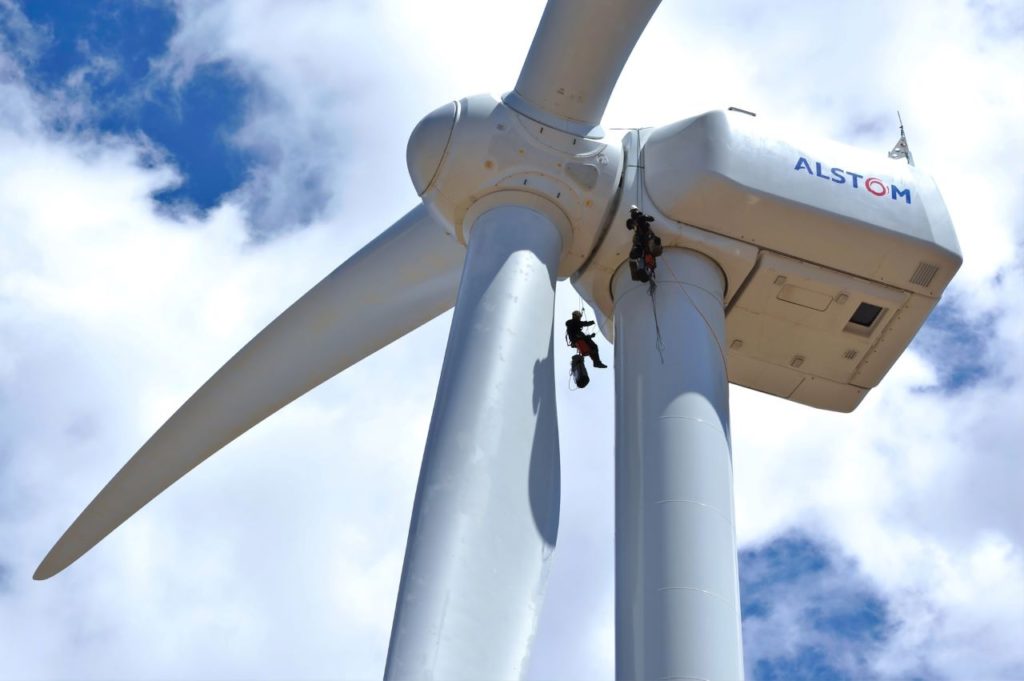
It could be said that the leading erosion protection market is in beta testing right now, where there are many solutions that need to be put to the test in real world conditions. Until leading edge protection solutions are spinning on wind turbines for 3, 5, 10 years in all climates with varying volumes of rainfall, we won’t know how well they truly hold up.
Widespread adoption is key so these solutions can improve over time.
Leading Edge Erosion: A Solvable But Widespead Problem
Yes, leading edge protection has come a long way in solving the industry’s LEE woes. But, we need to continue moving forward as an industry. This takes understanding of the problem, adoption and iteration of retrofit and factory solutions, and a willingness to share data and tackle this industry-wide problem with collaborative efforts.
Installing Leading Edge Protection? Upgrade Your LPS at the Same Time – It Will Save Time, Money & Headaches
If you’re a wind farm operator and considering an upgrade to your leading edge protection, it’s the perfect time to upgrade both your LPS and LEP. Our StrikeTape lightning diverters are built to last in the toughest rain erosion conditions and are installed quickly and easily.
You can prevent major lightning damage with our easily installed wind turbine LPS retrofit. Install Weather Guard StrikeTape at the same time you install your new LEP and save labor costs.
Here at Weather Guard, we are doing our part to protection wind turbines from lightning damage and will continue to be part of the energy efficiency solution for decades to come.

